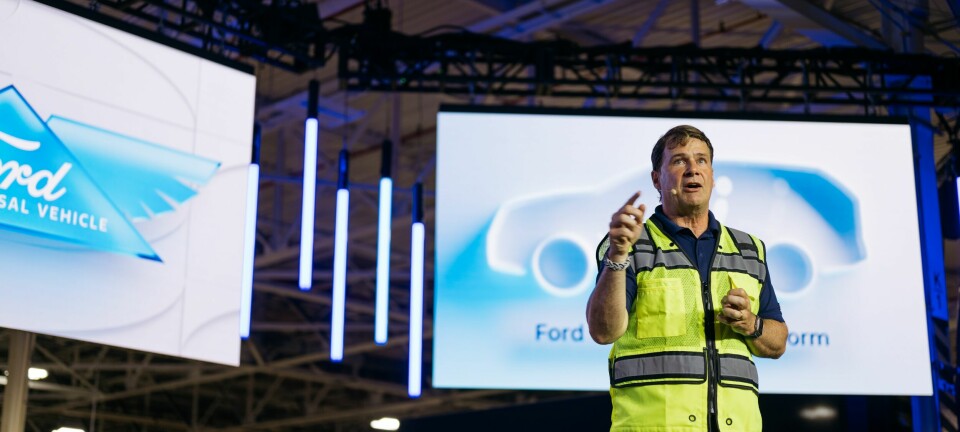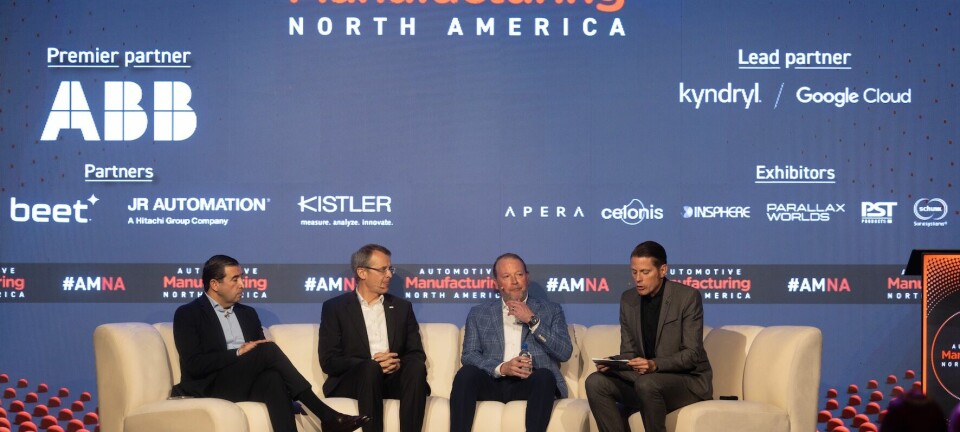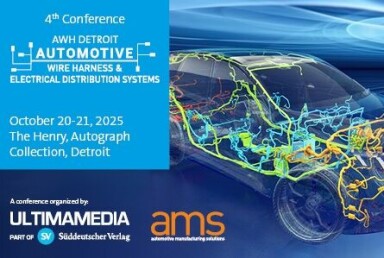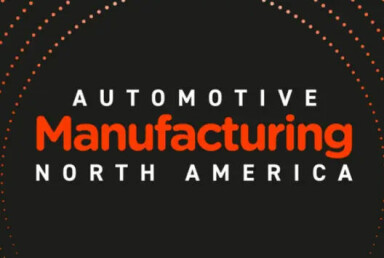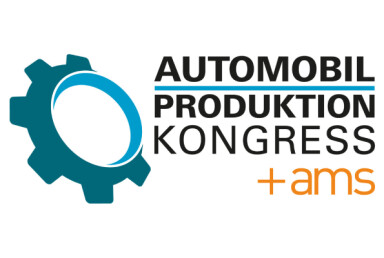Ford’s brownfield automation strategy
Inside Ford’s brownfield automation strategy: Scalable robotics, in-house AI, and workforce-first deployment
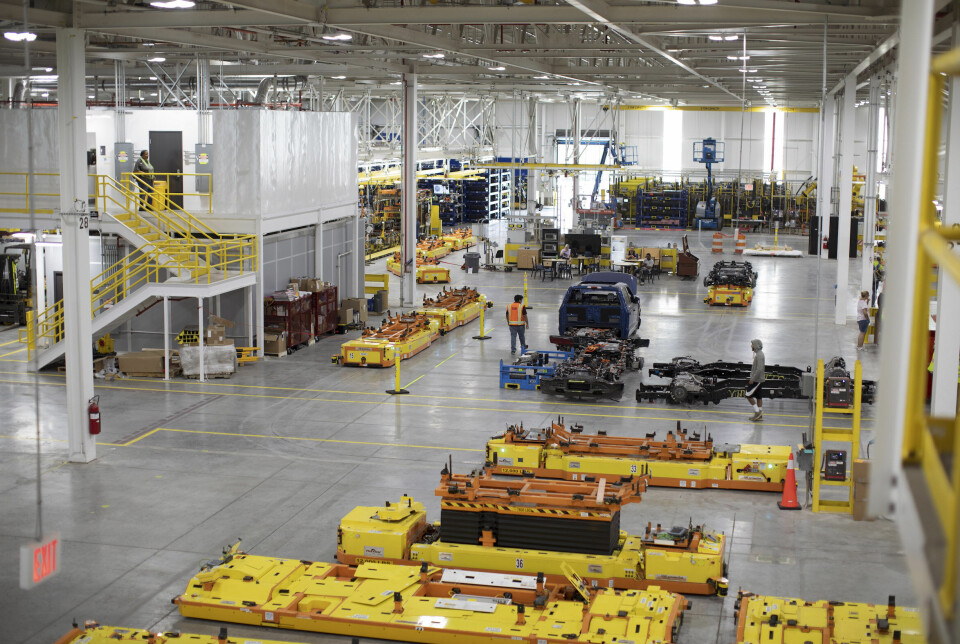
At AMNA 2025, Ford revealed how it’s modernising legacy plants through modular automation, low-code AI inspection tools and scaling automation without massive CapEx.
Speaking at the AMNA 2025 event, Paul Stephens, Ford’s Global Strategy Manager - Autonomous Robotics, discussed the OEM’s pragmatic approach to automation through brownfield-first deployments and rapid in-house software development.
Stephens opened by situating automation within the current context for American manufacturing. He traced the lineage from early high-throughput manufacturing innovations to Ford’s current challenge: competing with agile global entrants while modernising a large, diverse estate of brownfield plants. He noted that the OEM’s approach rests on three pillars: the right strategy, the right technology, and the right people. These pillars were used to justify choices that prioritise flexibility, speed of deployment and workforce impact.
Brownfield‑first, modular deployments
A central theme was Ford’s emphasis on brownfield solutions. Rather than waiting for greenfield programs, the company is investing in technologies that retrofit existing lines with minimal disruption. Autonomous mobile robots (AMRs), cobots and portable vision tools were presented as examples of modular automation that can be trialled quickly and scaled. Stephens noted that this brownfield‑first posture reduces the time to value and the capital intensity of projects, enabling rapid learning cycles across multiple plants.
Expanding on that approach, Ford prioritises non‑invasive, plug‑and‑play integrations that avoid deep PLC rewrites or lengthy line stoppages. AMRs are introduced incrementally – starting with predictable, repetitive dock‑to‑line tasks – and validated via layout and flow simulations to size fleets and routes before hardware rollout. To ensure interoperability across a disparate installed base, Ford mandates vendor compliance with VDA 5050 and orchestrates mixed fleets from a central fleet‑management layer that handles routing, task allocation and telemetry. Edge computing is used where latency or bandwidth constraints demand local processing, while the orchestration layer provides enterprise visibility and analytics.

Portable vision and inspection tools are developed in‑house for rapid deployment: lightweight models run on phones or embedded cameras and can be turned on in minutes to tackle specific quality pain points. These tools are intentionally modular – camera + model + app – so they can be moved between cells and plants without custom integration work. Cobots and small‑footprint automation are chosen for tasks that reduce ergonomic risk and repetitive motion, enabling quicker ROI and easier redeployment as priorities shift.
Ford also favours asset‑light commercial models (robot‑as‑a‑service, leasing) for modular elements to mitigate technology obsolescence and preserve budgetary flexibility. Pilot projects focus on high‑frequency, high‑friction problems where measurable KPIs (jobs per hour, first‑time quality, installation hours saved) demonstrate value quickly; successful pilots are then scaled across sites using repeatable deployment playbooks and standard data pipelines.
Stephens observed that this brownfield strategy is deliberately iterative: rapid pilots create local “pockets of excellence,” lessons learned are codified into standard operating packages, and the central team supports a fast replication cadence so multiple plants can benefit while minimising capital and operational disruption.
Autonomous mobile robotics and material flow
Stephens described a clear shift from pilots to operational AMR fleets running in production at multiple North American sites. The deployed AMRs perform predictable, repetitive dock-to-line and in-plant material movements — pallet transfers, kitting, sequenced part delivery and intercell replenishment — using 3D lidar, stereo vision and AI-driven localisation and obstacle avoidance. These sensors enable dynamic re-routing around people, temporary obstructions and forklifts, reducing stoppages and safety incidents while keeping takt-sensitive deliveries on time.
Before hardware is committed, Ford runs detailed flow and layout simulations to validate routeing assumptions, identify congestion hotspots and determine optimal fleet sizes. Simulation outputs drive fleet composition (mix of tug bots, small tuggers, and mobile carts), traffic rules (speed limits, reserved lanes) and chokepoint mitigations (virtual geofences, hold points). Predictive analytics on fleet telemetry then refine capacity planning in production: utilisation, idle time, mean time between failures, and dwell metrics feed sizing and scheduling adjustments.
Logistics orchestration layer
Central to scale is a vendor‑agnostic fleet orchestration layer. Ford’s logistics platform provides task allocation, dynamic routeing, collision management, battery and health monitoring, and a single API surface to the manufacturing operating system. This layer normalises telemetry from different vendors, performs real‑time optimisation (prioritising urgent kitting or line‑stop prevention tasks), and exposes operator‑level status at workstations. To ensure cross‑vendor interoperability, suppliers must support VDA 5050 (or equivalent) messaging and adhere to Ford’s cybersecurity and safety requirements; that lets mixed fleets be orchestrated as a single virtual resource rather than discrete silos.
Operational architecture balances edge and cloud. Low‑latency safety and motion control remain at the edge, while the orchestration, historical analytics and machine‑learning models run centrally to enable predictive maintenance and route optimisation. Telemetry streams are used for health‑based maintenance – trending motor currents, payload variations, navigation anomalies – enabling proactive servicing and improved uptime. Ford enforces governance standards (fleet orchestration, cybersecurity policies, and data schemas) so sites can rapidly accept vendor hardware with minimal custom integration.
Commercial model and change management are also part of the rollout. Stephens noted that Ford often pilots under asset‑light terms (leasing or robot‑as‑a‑service) to reduce CapEx risk and expedite refresh cycles. The reason for this stance is the rapid technology churn in automation and robotics (5–7-year effective life cycles). Ford prefers operational expenditure models where feasible – robot-as-a-service or leasing – which preserve optionality and reduce large up-front capital commitments. This approach allows Ford to refresh capabilities more rapidly and avoid being locked into single-generation solutions.
Early pilots focus on measurable KPIs – jobs per hour, on‑time deliveries, hours of operator touch eliminated, and installation hours saved – to build business cases for scale. Implementation playbooks codify safety validation steps, operator handover procedures, routeing rules and exception workflows so plant teams can operate and maintain fleets locally.
Dock-to-line and supplier orchestration
Ford is extending orchestration outside of plant boundaries. Beyond plant-internal automation, Stephens spoke to broader supply-chain integration. The aim is dock-to-line orchestration that coordinates supplier shipments with in-plant logistics. Ford is experimenting with digital platforms that extend part tracking and scheduling upstream, enabling more reliable sequencing and reduced inventory buffers. The ambition is to simulate and optimise flow across supplier docks and into the plant, accounting for variability and enabling rapid response to disruptions.
Dock‑to‑line ambitions include tighter supplier coordination: digital scheduling and real‑time dock telemetry feed the orchestration engine, so inbound sequencing aligns with line demand, reducing buffers and enabling just‑in‑time deliveries. The combined approach – simulation, standards-based orchestration, edge/cloud split, and outcome‑focused pilots – turns AMRs from isolated experiments into an integrated material‑flow capability that measurably reduces touch, improves flow resilience and frees people for higher‑value work.
In-house AI inspection capability An important differentiator Stephens highlighted was Ford’s sizeable internal investment in lightweight, rapidly deployable AI inspection tools. Rather than relying on large integrator projects that can take months, Ford’s internal teams build inspection models and apps designed to be deployed in minutes on devices such as smartphones and embedded cameras. The result has been dramatic: detection rates that historically hovered around 70% with manual inspection now exceed 99% in many installed cases.
The in-house approach offers several benefits. First, it provides rapid feedback loops between operators and the data/AI teams, accelerating model improvements. Second, the low cost and portability of solutions mean use cases with small but recurrent quality losses can be addressed immediately. Third, these tools are easier to scale across plants once the data pipeline and model lifecycle practices are mature.
Workforce impact, upskilling and change management
Stephens framed automation as liberating workers for higher-value tasks rather than replacing them and emphasised substantial investment in upskilling – training operators and technicians to operate, supervise and collaborate with AMRs and AI tools. Ford’s philosophy includes creating clear career pathways for workers who gain new skills, and using rapid, visible wins to counter scepticism among longstanding operators.
To build buy-in, the company also focuses on demonstrable benefits: reducing repetitive, ergonomically stressful tasks; providing clearer metrics to frontline staff; and improving part availability at the point of use. These outcomes support the approach that automation improves daily work and reduces operational stress.
Stephens presented Ford’s automation strategy as deliberately pragmatic and human-centred. The company is moving from concept to scale by favouring brownfield-compatible, modular technologies, building internal software capabilities for rapid deployment, centralising orchestration through fleet management and standards compliance, and emphasising workforce training and change management. The combined approach aims to unlock measurable productivity and quality gains quickly while preserving flexibility to evolve with rapid technological change.
